In a world brimming with distractions, managing tasks can feel like herding cats—chaotic and downright impossible. Enter task management tools, the superheroes of productivity that swoop in to save the day. These nifty digital sidekicks help turn overwhelming to-do lists into manageable action plans, making it easier to tackle everything from mundane chores to ambitious projects.
Table of Contents
ToggleOverview of Task Management Tools
Task management tools streamline the organization of tasks and projects. They provide intuitive interfaces for users to create, assign, and prioritize work efficiently. Many of these tools include features for collaboration, allowing teams to communicate and stay aligned on project goals.
Numerous task management tools are available, each offering unique functionalities. Popular options include Trello, Asana, and Todoist, which cater to different needs and preferences. Trello utilizes boards and cards for visual task tracking, while Asana focuses on list views and timelines. Todoist excels in simple task entry and categorization.
Effective prioritization remains a key feature of these tools. Users can often categorize tasks using labels, due dates, and tags, making it easy to focus on urgent items first. Visual indicators such as color coding enhance clarity and assist in quickly identifying priority levels.
Integrating task management tools into existing workflows significantly boosts productivity. Users can sync tasks with calendars, ensuring deadlines remain visible. Automated reminders help keep everyone on track, reducing the chances of missed tasks.
Collaboration tools within these platforms allow for real-time updates and discussions. Team members can comment on tasks, share files, and assign responsibilities, creating a central hub for project communication. This interconnectivity fosters accountability and helps teams maintain progress toward goals.
Task management tools offer essential features that help individuals and teams manage their workloads effectively. With options suitable for various needs and robust functionalities, they are invaluable resources for navigating today’s demanding work environments.
Key Features to Consider
When selecting a task management tool, certain features significantly enhance usability and effectiveness. These features promote smoother workflows and improved task organization.
User Interface and Experience
User interface plays a vital role in how effectively a tool operates. A clean, intuitive layout simplifies navigation. Customization options enable users to tailor their views, accommodating individual preferences. Visual elements, such as boards or lists, enhance task tracking and make management visually engaging. Quick access to important features minimizes distraction and boosts productivity, making it easier to focus on completing tasks.
Integration Capabilities
Integration capabilities determine how well a task management tool fits into existing workflows. Supporting various applications, these tools streamline task management and communication. Users benefit from syncing with calendars, email platforms, and file-sharing services, leading to a seamless experience. By providing automated reminders and updates across integrated tools, teams maintain awareness of deadlines and progress. Efficient integrations ultimately foster collaboration and enhance accountability.
Popular Task Management Tools
Task management tools serve as vital resources in organizing and streamlining tasks. Here’s an overview of some popular options.
Tool A: Overview and Features
Trello offers a visually appealing platform where users can manage tasks through boards and cards. Cards represent individual tasks, allowing for easy drag-and-drop organization. Prioritization is enhanced with labels, due dates, and color coding, enabling teams to focus on what’s urgent. Real-time collaboration features encourage team discussions and updates, fostering accountability. Integration with other tools like Slack and Google Drive boosts efficiency by keeping all resources in one place.
Tool B: Overview and Features
Asana stands out for its comprehensive project management capabilities. The interface supports list views, timelines, and boards, providing flexibility based on user preference. Team members can assign tasks, set deadlines, and track progress visually. Features designed for prioritization include custom fields and task dependencies. Integration with popular applications such as Microsoft Teams and Dropbox allows users to centralize information, ensuring smoother workflows.
Tool C: Overview and Features
Todoist excels in simplicity and ease of use for task entry. Users can create tasks quickly and assign them due dates and priority levels. A straightforward interface allows for effective organization of personal and professional projects. Task grouping into projects and sections helps users maintain clarity. Integration with calendars and other productivity tools ensures tasks sync seamlessly with daily schedules, making it an ideal choice for busy individuals.
Benefits of Using Task Management Tools
Task management tools enhance productivity by transforming overwhelming to-do lists into manageable actions. Increased organization leads to better clarity in everyday tasks and large projects. Users benefit from features like labels, due dates, and color coding, which prioritize urgent tasks effectively.
Collaboration becomes seamless with real-time updates and discussions. Team members stay aligned on projects, fostering accountability and progress toward goals. Integration capabilities connect task management tools with calendars, email platforms, and file-sharing services, making workflows more efficient.
Various tools offer distinctive advantages. Trello’s visually appealing boards aid in intuitive task organization and tracking. It allows users to collaborate effortlessly while maintaining focus. Asana stands out for its comprehensive project management features, including list views and timelines that facilitate detailed project planning. Todoist’s simplicity makes it easy for users to enter tasks quickly, ensuring that nothing falls through the cracks.
Automated reminders keep deadlines at the forefront of users’ minds. These notifications nudge individuals toward task completion, significantly reducing the chance of missing important deadlines. Choosing the right task management tool that aligns with team dynamics ensures maximum productivity.
Customization options enhance user experience. A clean, intuitive layout simplifies navigation and reflects user preferences. Enhancing task tracking leads to more effective management and execution of responsibilities.
In rapidly changing work environments, task management tools stand out as essential resources. They not only improve organization but also promote a productive work culture.
Challenges and Limitations
Task management tools face several challenges despite their benefits. One significant limitation is user adoption. Teams may struggle to transition from traditional methods to digital platforms, creating resistance to change. When members remain uncomfortable using new tools, managing tasks efficiently suffers.
Another issue is integration with existing systems. Many organizations utilize various software solutions, and not all task management tools integrate seamlessly with other applications. This can lead to fragmented workflows, complicating processes rather than simplifying them.
Inconsistent updates also pose a challenge. Some task management tools depend on users to post updates. If team members fail to keep their tasks updated, the overall picture of progress becomes unclear, hindering effective prioritization and collaboration.
Task overload can occur as well. Tools often allow users to create numerous tasks, which can lead to overwhelming task lists. Clarity diminishes when everything appears important, making it hard for individuals to focus on immediate priorities.
Limited customization options constitute another limitation. While some tools offer basic organization features, not all cater to specific team needs. Without flexible solutions, teams find difficulty in adopting an approach that fits their unique workflow.
Cost constraints can deter adoption too. Many task management tools operate on subscription models, which can add up for large teams. Organizations often weigh the benefits against potential expenses, leading to hesitation in selecting comprehensive solutions.
By understanding these challenges, teams can better navigate the landscape of task management tools. Recognizing limitations alongside benefits ensures an informed choice, leading to improved task management in diverse work environments.
Task management tools offer essential support for navigating the complexities of modern work environments. By transforming chaotic to-do lists into structured plans, these tools empower individuals and teams to enhance productivity and accountability.
With a variety of options available, users can select tools that best fit their unique needs and workflows. The right task management tool not only streamlines task organization but also fosters collaboration and communication among team members.
While challenges like user adoption and task overload exist, understanding these limitations can lead to better decision-making. Embracing the right task management solution can significantly improve efficiency and create a more productive work culture.


